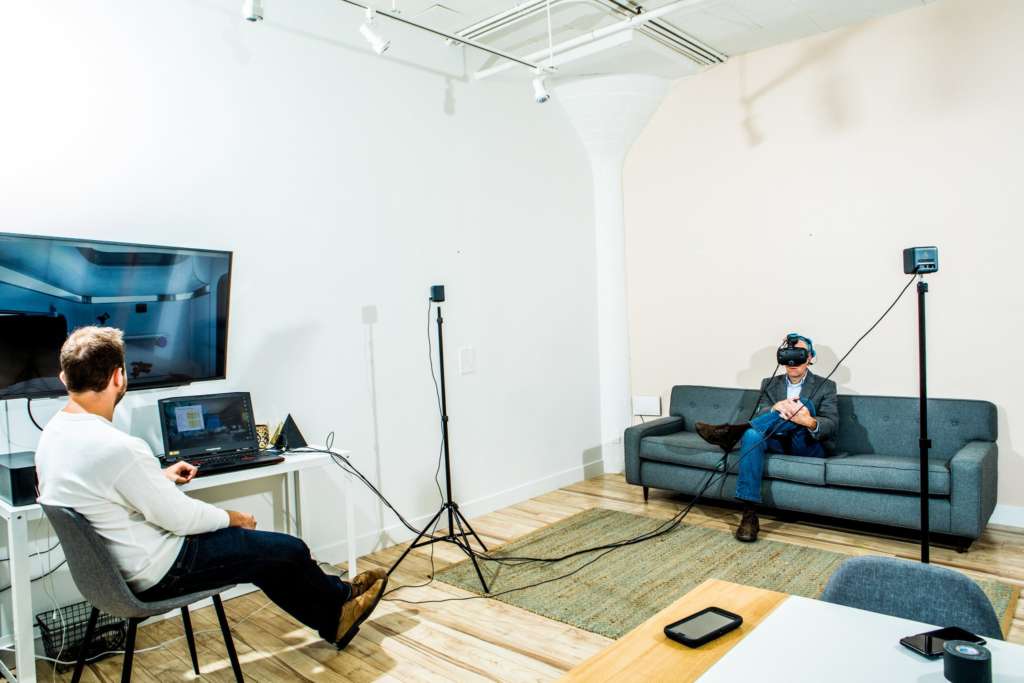The increased interest in neurotechnology is partly a result of an effort the Obama administration started in 2013. The initiative helped create significant government financing for brain-interface companies and related work in academia. Then Elon Musk, the founder of Tesla and SpaceX, began promoting the idea and his latest company, Neuralink. That combination has attracted the interest of private venture capital firms.
“With the smartphone, we’re starting to reach the limits of what we can do,” said Doug Clinton, the founder of Loup Ventures, a new venture capital firm that has invested in Neurable. “These companies are the next step.”
The Neurable prototype shows what is possible today. Using electroencephalography, or EEG — a means of measuring electrical brain activity that has been around for decades — the company can provide simple ways of mentally interacting with a game. Some companies hope to go much further, and want to build ways of performing nearly any computing task with the mind. Imagine a brain interface for rapidly typing on a smartphone.
Even for Silicon Valley entrepreneurs like Mr. Musk, setting that goal pushes technological optimism to new heights. Some efforts seem particularly quixotic. Mr. Musk said in one interview that Neuralink planned to develop ways of implanting hardware in the skulls of completely healthy people.
At Neurable, which is based in Boston, Mr. Alcaide and the members of his team are pushing the limits of EEG headsets. Although sensors can read electrical brain activity from outside the skull, it is very difficult to separate the signal from the noise. Using computer algorithms based on research that Mr. Alcaide originally published as a doctoral student at the University of Michigan, Neurable works to read activity with a speed and accuracy that is not usually possible.
The algorithms learn from your behavior. Before playing the game, you train them to recognize when you are focusing your attention on an object. A pulse of light bounces around the virtual room, and each time it hits a small colored ball in front of you, you think about the ball. At that moment, when you focus on the light and it stimulates your brain, the system reads the electrical spikes of your brain activity.
After you do this for a few minutes, the game learns to recognize when you are concentrating on an item. “We look at specific brain signals,” Mr. Alcaide said, “and once we understand them, we can use them.”
When you play the game, the same light bounces around the virtual room. When it hits the item you are thinking about, the system can identify the increase in brain activity.
The technique works with equipment that already exists. Neurable’s prototype uses virtual reality goggles from HTC, a consumer electronics company, and seven EEG sensors placed at specific spots around your head. But given the physical limits of what these sensors can read, an EEG-based game is unlikely to do more than slowly and simply select digital objects.
Some companies are working to move beyond that. Facebook, for example, is exploring methods for optically reading brain activity from outside the skull. Such a system would shine light into the brain to directly read chemical changes.
“What if you could type directly from your brain?” Regina Dugan of Facebook said this spring as she unveiled the company’s efforts to build this kind of optical interface. “It sounds impossible, but it’s closer than you may realize.” In a few years, she said, Facebook hopes to have a system that allows people to type with their thoughts five times faster than they now type using a smartphone keyboard.
That is well beyond the realm of current research, and a number of neuroscientists question whether it will ever be possible, arguing that such speed will only come with devices planted inside the skull.
Several start-ups are now working to do just that. But some, including a Silicon Valley start-up called Paradromics, hope to do this as a way of treating people with medical conditions like blindness, deafness and paralysis.
Implanting hardware in the brain is dangerous, but the reward for patients could outweigh the risks. For companies like Paradromics, the goal is to significantly refine and expand the current methods, providing a faster and more complete way for patients to operate machines with their thoughts.
Mr. Musk’s Neuralink is moving in a similar direction, but the company’s ambitions appear to stretch much further, to eventually implanting chips in healthy people’s brains.
The dangers of brain surgery make this unlikely. But Mr. Boyden said there were some possibilities.
“I do find it implausible that an implant would go directly into the brain of someone with zero health problems,” he said. “But if companies take the right approach in helping people with the greatest need, then there may be a way for this to spread into people with less severe conditions, and then eventually become a kind of brain augmentation.”
Certainly, many of these projects will be met with skepticism. And Silicon Valley’s enthusiasm does not always mesh with the physical limitations of medicine and the human body.
“In the physical sciences, there are physical boundaries,” said Matt Angle, a neuroscientist and the founder of Paradromics. “To think that you’ll be able to blow through fundamental laws by sheer ambition and enthusiasm is naïve.”
(The New York Times)
